Oil Pump Service
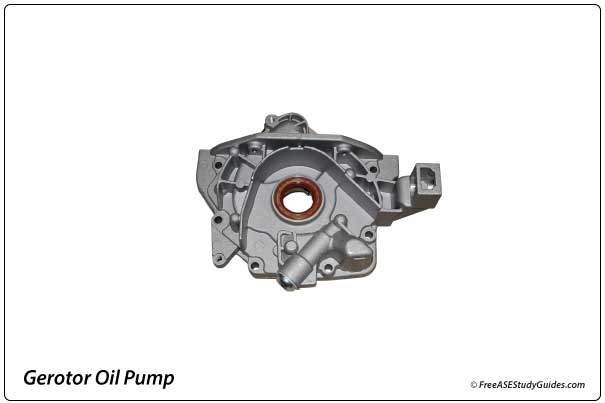
Most modern engines have an eccentric gerotor gear pump at the front. These pumps have an internal gear driving an external driven gear.

Twin gear pumps have two gears in mesh and are inside the oil pan. The pump's efficiency suffers as the oil pump's gears and housing wear.
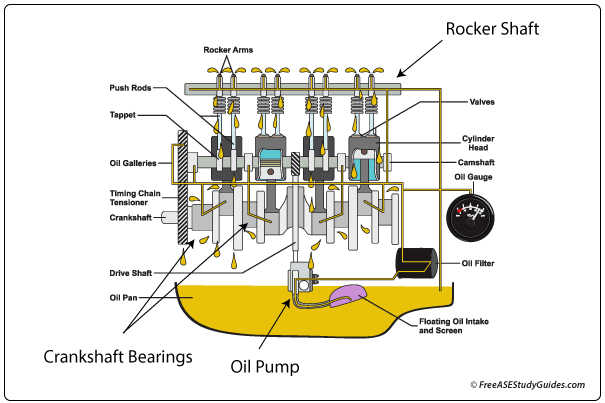
Automobile engines have open systems with drains that return oil to the sump. As a result, oil pressure varies depending on temperature, viscosity, component wear, and location. For example, a crankshaft bearing farther from the pump may get less oil pressure on a high-mileage engine than a bearing close to the pump.
Oil pressure starts at the pump but is caused and affected by the bearings and restrictions throughout the engine. When crankshaft bearings wear, oil pressure drops as the oil flows more easily out of the increasing gap.
Oil pressure relief valves maintain and prevent high oil pressure from developing. They have a piston or ball and a calibrated spring. The spring compresses at a specific pressure opening a port and allowing oil to return to the pump's inlet or back to the sump.

Oil pumps wear in high mileage or poorly maintained engines. As the pump wears, less oil pressure reaches the top of the engine, resulting in noise like valve tap. In addition, the oil light may flicker or remain on, informing the driver of low oil pressure.
Oil Pump Checks
After removing the oil pump, use a straight edge and a feeler gauge to check the oil pump body flatness, gear end play, and side clearance.
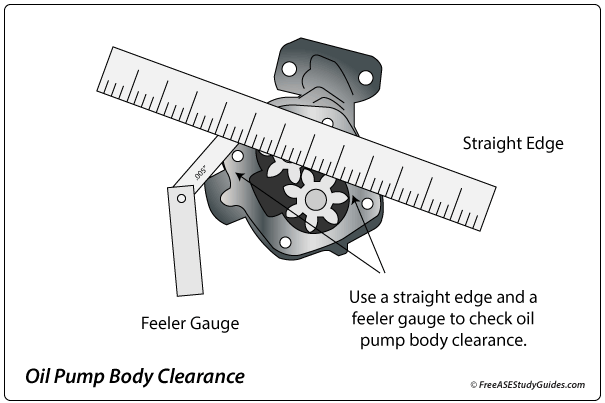
Place the straightedge across the oil pump body and insert the feeler gauge blade to measure pump case flatness.
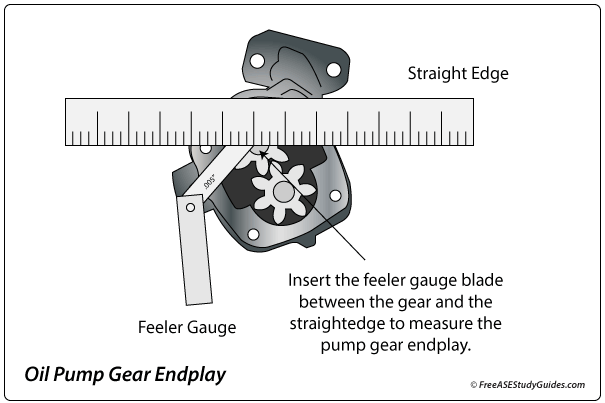
Place the straightedge across the oil pump body and insert the feeler gauge blade between the gear and the straightedge to measure the pump gear end-play.
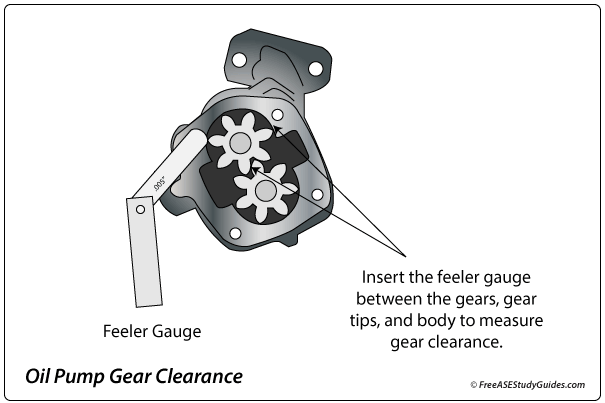
Visually inspect the gears and body for wear. Then, insert the feeler gauge between the gears, gear tips, and body to measure gear clearance.
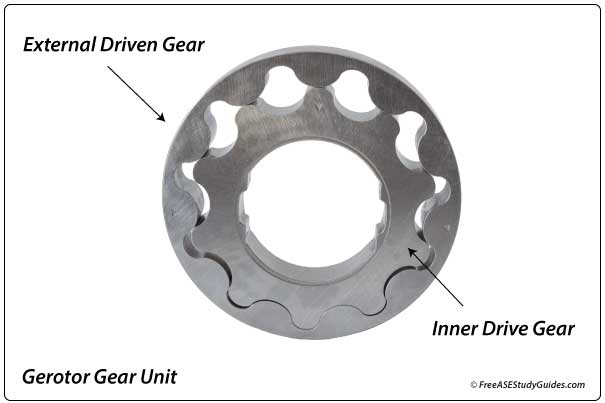
Front-mounted gerotor pumps have external and internal gear powered by the crankshaft. Check clearances with a feeler gauge and manufacturer's specifications.